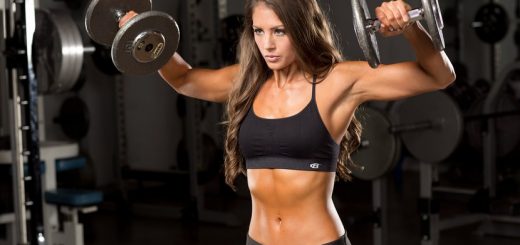What is Deadlift Grip?

- Applications of Deadlift Grip
- Benefits of Proper Deadlift Grip
- Challenges of Deadlift Grip
- Practical Tips for Mastering Deadlift Grip
- Conclusion
What is Deadlift Grip?
Unlocking the Power of Deadlift Grip: Definitions, Applications, Benefits, and Challenges
Deadlifts are one of the most popular exercises in the fitness world. They are known for their ability to build strength and improve overall fitness. However, many people overlook the importance of proper grip when performing deadlifts. In this article, we will dive into the world of deadlift grip, exploring its definitions, applications, benefits, and challenges. Whether you are a beginner or an experienced lifter, understanding and mastering your grip can take your deadlifts to the next level.
What is Deadlift Grip?
Deadlift grip refers to how you hold onto the barbell when performing a deadlift. There are two main types of grips used in deadlifting: overhand (pronated) and mixed (one hand overhand and one hand underhand). The overhand grip involves holding onto the bar with both hands facing away from you. On the other hand, the mixed grip has one hand facing away from you while the other hand is facing towards you.
In addition to these two main grips, there are also variations such as hook grip and false grip. The hook grip involves wrapping your fingers around your thumb before gripping the barbell. This technique can provide more stability but may take some time to get used to. The false grip involves gripping the barbell with just your fingertips instead of wrapping them around it. This technique is not recommended for beginners as it can increase the risk of injury.
Applications of Deadlift Grip
The type of deadlift grip you use can have a significant impact on your performance and results. For beginners, using an overhand grip is recommended as it allows for a more natural movement pattern and builds overall strength in both arms equally. As you progress and start lifting heavier weights, switching to a mixed grip can help prevent slipping or dropping of the bar.
The hook grip is commonly used by Olympic weightlifters and powerlifters. It allows for a stronger grip on the barbell, making it easier to lift heavier weights. The false grip is mainly used in gymnastics and calisthenics exercises, where grip strength is essential for performing advanced movements.
Benefits of Proper Deadlift Grip
Having a strong and stable grip is crucial for performing deadlifts safely and effectively. A proper grip allows you to lift heavier weights, increases overall strength in your arms and hands, and reduces the risk of injury.
Additionally, mastering different types of grips can provide variety in your training routine, targeting different muscles and challenging your body in new ways. For example, the hook grip requires more finger strength while the false grip relies on wrist stability.
Challenges of Deadlift Grip
While mastering proper deadlift grip can have numerous benefits, it also comes with its own set of challenges. The most common challenge is developing calluses on your hands from gripping the barbell. This is a natural response to repeated friction and pressure on the skin. To prevent calluses from becoming painful or torn, it is important to take care of your hands by using chalk or wearing gloves.
Another challenge is maintaining a strong grip throughout the entire movement. As fatigue sets in during a deadlift set, it can be tempting to loosen your grip or switch to an easier variation. However, this can limit your progress and increase the risk of injury. It is crucial to maintain a firm hold on the bar throughout the entire lift.
Practical Tips for Mastering Deadlift Grip
1. Warm-up: Before starting any deadlift session, make sure to warm up your hands by doing some light wrist rotations or using a hand gripper.
2. Use chalk: Chalk can improve your grip by absorbing sweat and increasing friction between your hands and the barbell.
3. Switch up grips: Incorporating different types of grips into your training routine can help build overall grip strength and prevent boredom.
4. Focus on form: Proper form is essential for maintaining a strong grip. Make sure to engage your lats and keep your shoulders back throughout the entire lift.
5. Train grip strength separately: If you are struggling with grip strength, consider adding specific exercises such as farmer’s carries or towel pull-ups to your routine.
Conclusion
Deadlift grip is an often overlooked but crucial aspect of performing deadlifts. Understanding the different types of grips and their applications can help you improve your performance, build overall strength, and prevent injury. While it may take some time to master, incorporating proper grip techniques into your training routine can have numerous benefits. So next time you hit the gym for a deadlift session, don’t forget to give your grip some attention.



